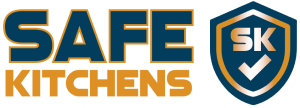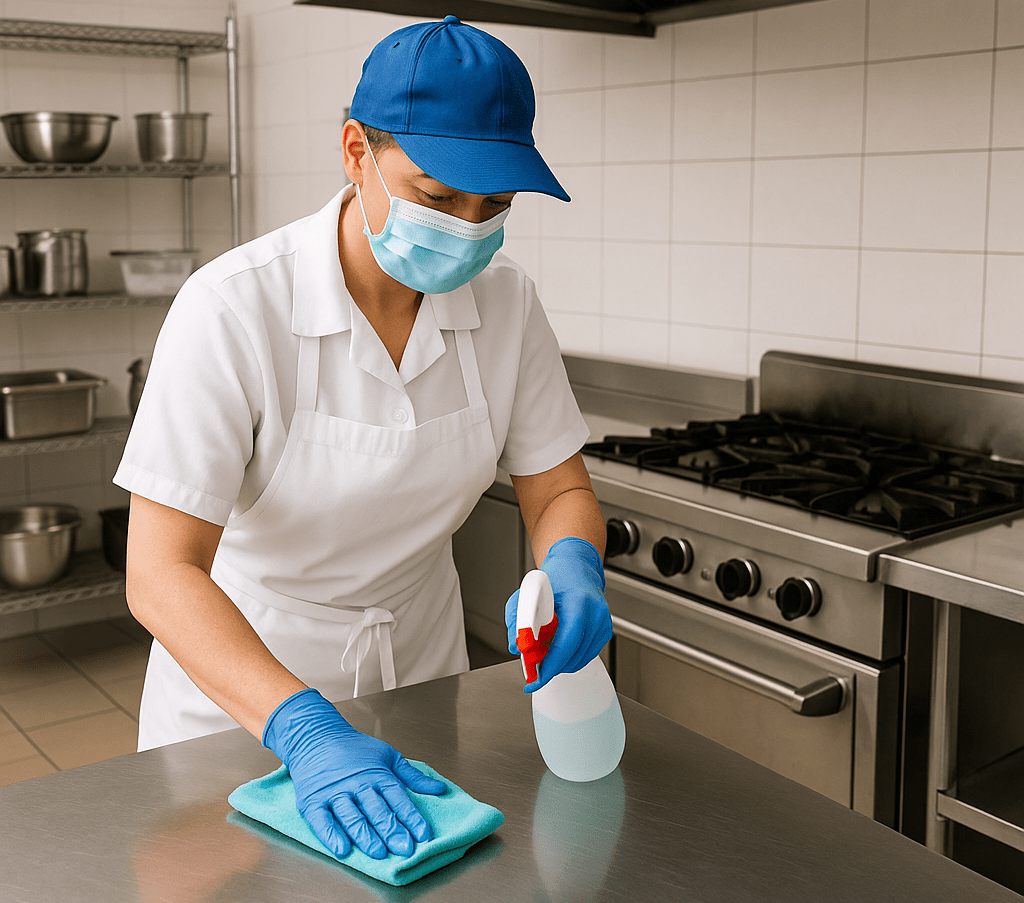Sanitization Secrets: How Professional Cleaning Protects Your Customers
One in six. It’s a staggering number, and it’s not one to overlook: the CDC estimates that one in six Americans gets sick from contaminated foods or drinks each year.
Unfortunately, many of these incidents are tied directly to improper sanitation.
While no one sets out to put their customers at risk, many foodservice businesses just don’t realize how much of a difference professional cleaning can make in keeping their operations safe.
Professional cleaning is often seen as a way to make a surface look clean, but there’s much more to it than meets the eye. Proper cleaning also comes down to creating an environment that eliminates harmful germs, ensures regulatory compliance, and gives your customers the peace of mind they need (and deserve).
So, how does professional cleaning go the extra mile to protect your customers? Here’s what you need to know.
What Makes Professional Cleaning Different?
At first glance, cleaning seems straightforward. After all, scrubbing surfaces and taking out the trash are rote tasks we’re all pretty familiar with.
But professional cleaning goes beyond the basic daily routines. It involves a deep, methodological approach to cleaning and sanitization. It targets not just the visible dirt, but also the harmful bacteria, viruses, and pathogens lingering beneath the surface.
Professional cleaning takes into account areas that tend to get overlooked during day-to-day staff routines. Hard-to-reach nooks, greasy buildup, and surfaces that frequently touch food—these all require a more specialized approach and targeted attention.
Here, you need to not just meet compliance standards, but also go the extra mile to reduce cross-contamination risks that might put your business in legal hot water (or make your customers sick).
Getting the right team on your side is one simple step you can take to make sure you’re keeping everyone safe. At SafeKitchens, we offer professional cleaning with specialized equipment, techniques, and products meant to keep your commercial kitchen safe.
At the same time, training your staff with food safety resources from approved providers like Trust20 will help you make sure every single person on your team understands the proper sanitation protocols between visits.
Why Poor Cleaning is a Recipe for Disaster
When sanitization takes a backseat, the consequences can be devastating. Poor hygiene practices can lead to foodborne illnesses, such as Salmonella, E. coli, and norovirus. Each of these illnesses impacts your customers, of course (it’s estimated that each year in the United States, norovirus alone is responsible for as many as 21 million cases of vomiting and diarrhea); however, it also affects your bottom line.
The negative word of mouth, potential fines, and lawsuits are enough to make you shudder. Unfortunately, this is a reality for many businesses that overlook or underestimate the importance of thorough cleaning practices.
That’s where SafeKitchens comes in. Our tailored cleaning services tackle the grime and germs that regular cleaning can’t. We address critical areas like grease traps, ventilation systems, and even behind appliances. We’ll make sure your kitchen is spotless, but more importantly, that it’s safe.
Where Professional Cleaning Has the Most Impact
Think professional cleaning only applies to the dirtiest areas of your commercial kitchen? Think again. It transforms key areas of any foodservice operation, both in terms of function and appearance.
Take your kitchen, for example. Grease, food residue, and bacteria can build up in surprising places, from range hoods to cutting boards. Professional cleaning services specialize in deep cleaning those areas, ensuring you remain in compliance with health codes and reduce your contamination risks.
Your bar is another area where professional cleaning shines. Left unchecked, sticky residues and allergens from beverages can attract pests or pose a risk to your customers. A professional commercial cleaning service will make sure every single surface, from the smallest of beer taps to the largest of shelves, is stabilized to an impeccable standard.
Even your dining area deserves proper attention. Your customers, after all, care just as much about cleanliness as they do good food. A spotless table, sanitized high-touch areas, and sparkling floors all contribute to how safe and professional your business appears. And that, at the end of the day, translates to a stronger bottom line.
6 Steps to Integrate Professional Cleaning Into Your Business
Cleanliness is your silent partner in the war against foodborne illness. But how exactly do you implement a professional cleaning service into your existing routine? Here are some tips:
1. Perform a Thorough Assessment
Before you can elevate your cleaning processes, you need to know exactly where you stand.
Take a close look at your kitchen from top to bottom. Check for trouble spots, such as grease buildup, handling practices for raw ingredients, and those often-neglected corners. This assessment will help you pinpoint areas that need more than just elbow grease.
If you can, don’t just trust your own eyes to give you the information you need to know. Ask members of the team, or even trusted outsiders, to look around and give you an honest assessment of what you’re doing well, and what might be lacking. It’s easy to miss problems if you’ve become blind to your surroundings after days on the job.
2. Set Up a Structured Cleaning Plan With SafeKitchens
A piecemeal approach to cleaning won’t cut it. You need a structured, strategic approach that is reliable and consistent.
SafeKitchens can help you create a customized cleaning plan that meets your kitchen’s specific needs. From daily wipe-down protocols to deep-clean schedules, having a structured plan with us means you’ll never miss a beat.
And the best part? We’ll handle everything, so you can focus on what you do best—running your business.
3. Train Your Team with Trust20 Food Safety Courses
Your staff is your frontline in maintaining hygiene, and good habits start with proper training. Take some time to enroll your team in Trust20’s food safety courses for hands-on, practical guidance.
They’ll learn everything from safe food storage to proper cleaning techniques. With the right training, you can make sure cleanliness becomes part of your restaurant’s DNA, not just an afterthought.
4. Regularly Audit and Adjust Your Cleaning Practices
Set a schedule to review the effectiveness of your cleaning plan. Are there areas in the kitchen staff that keep forgetting? Is your equipment breaking down more quickly than expected due to improper cleaning methods?
5. Communicate Your Hygiene Standards to Customers
Don’t keep your hard work a secret! Your customers will appreciate knowing how much you care about their well-being. Utilize signage, social media posts, or even your menu to showcase your commitment to cleanliness.
Something as simple as a prominently displayed safety certificate can go a long way in reassuring diners that their health is your priority.
Keep Your Customers Safe By Trusting in Professional Cleaning
Foodborne illness, negative reviews, declining customer trust. None of these look good on your menu. But when you prioritize professional cleaning and safety practices, you’re actively protecting your customers and your reputation.
Cleanliness isn’t something you want to cut corners on. And it’s about so much more than just shiny counters and fresh-smelling floors. It’s about establishing trust, upholding safety standards, and creating an environment that people want to return to, again and again.
Still not sure where to start? Enroll in Trust20’s food safety programs for hands-on expert knowledge, or schedule a consultation with SafeKitchens to create a customized cleaning plan that will make your space sparkle.
Clean kitchen. Safe customers. Zero worries. Now is the time to prioritize professional cleaning for your business.

